Split is 241km from Plitvice and takes 2.5-3 hours by car. We stopped on the way in Kliss Fortress known for its link to the ‘Game of Thrones’ show and the Roman ruins of Salona at Solin.
Klis Fortress – 12 km northeast of Split, the impressive fortress sits along a limestone bluff, which is 385 meters at its tallest point, and it’s used to control the valley leading into town. The fort is long and narrow thanks to its lengthy existence, which led to constant extensions as the centuries progressed. A small museum on-site features displays about the castle’s bloody past, as well as traditional costumes and swords. If you watch Game of Thrones, you may recognize the fortress as the City of Meereen.
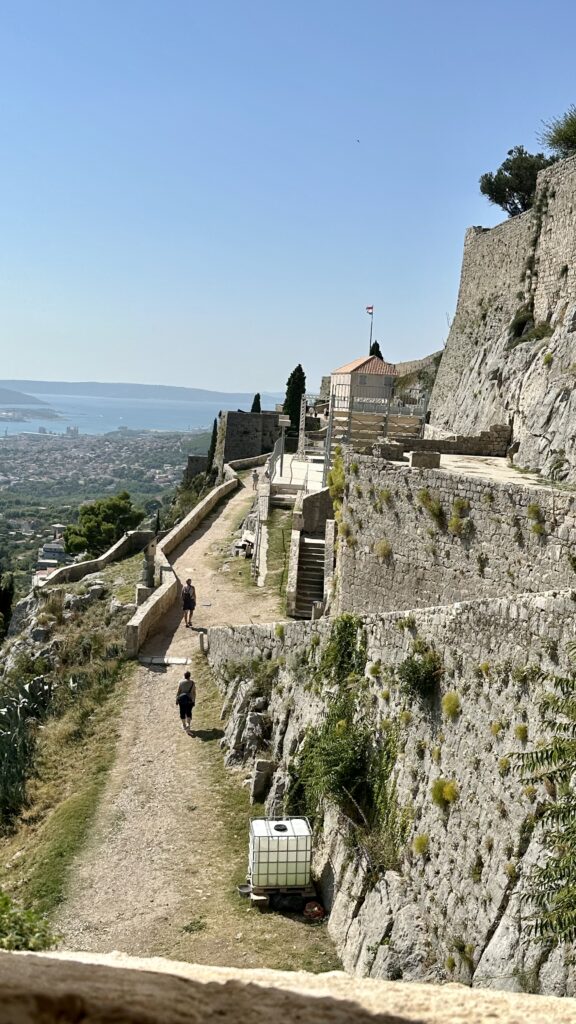



You zigzag up a fairly steep incline to access the fortress. It sprawls over the hilltop and is full of lookouts and nooks. The interior of the fortress includes open courtyards and spaces that once served as barracks, storage areas, and living quarters for the defenders. From the fortress, you have an amazing view of Split, its harbor, and the surrounding countryside.
Roman Ruins of Salona at Solin – Admission to the archaeological park is €4/adults. The remarkable Roman ruins of Salona are just outside Solin, a sleepy suburb just 5km northeast of Split . Now part of an archaeological park, the Salona ruins are extensive, testifying to the importance of this colony under Roman rule.



It takes at least one hour to visit the main sights. There are ample explanatory panels in English and the paths are well-marked. Things that stood out were the remains of City Wall, Episcopal Center, and the Amphitheatre at the northwestern end of the park.
In Split, it was all about Diocletian Palace. The 4th century complex is a sprawling maze of beautifully preserved ancient ruins, shops, restaurants, apartments, and people. It is a UNESCO World Heritage Site built in Roman military camp style. Its basement also served as a set location for filming the Game of Thrones. The palace took approximately 10 years to complete. Although Emperor Diocletian only lived here for eight years until his death in AD 313, the palace continued to play an important role as an administrative center and the governor’s residence. Three centuries later, in AD 615, the palace was used as a refuge for the residents of Salona when their city was sacked by the Germanic Avars. They created houses and businesses within the walls and transformed the palace into a town. Most structures were repurposed and Gothic and Renaissance elements were added. The residents moved in and never left, making it currently the only inhabited roman ruin.
There are several notable attractions within the palace and you have to purchase tickets to get into them.
The peristyle was the Palace’s central square, where powerful Roman citizens gathered or came to worship Diocletian. It is one of the best preserved parts of the Palace, an open rectangular court decorated with a colonnade. The Peristyle was cleaned and restored between 2001-10, with centuries worth of dust and grime removed. Today, it gleams. The Peristyle is lit up at night, and is quite a sight.
Just off the Peristyle is the Vestibule. This circular room is visually interesting and has impeccable acoustics. The opening or oculus, was intended as a window between heaven and earth through which the gods could look down upon Diocletian. It was likely modeled after the Pantheon in Rome.
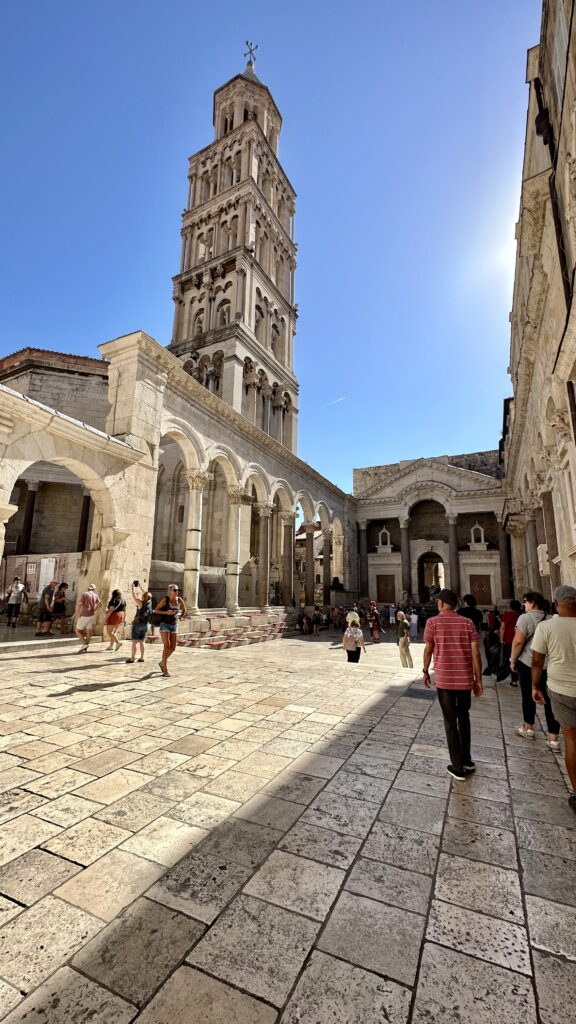

Temple of Jupiter – Originally a Roman religious building, in the 6th century, the temple was converted into a baptistery dedicated to St. John. It is centrally located inside Diocletian’s Palace. Vengeful Christians beheaded the Egyptian Sphinx that guards the temple’s entrance because it was a pagan symbol. Several features of note are the barrel vaulted ceiling above the door, baptismal font with a panel representing King Zvonimir and other dignitaries, as well as carvings by Ivan Mestrovic (Croatia’s famous sculptor), which were added to the statue of St. John on the end wall.


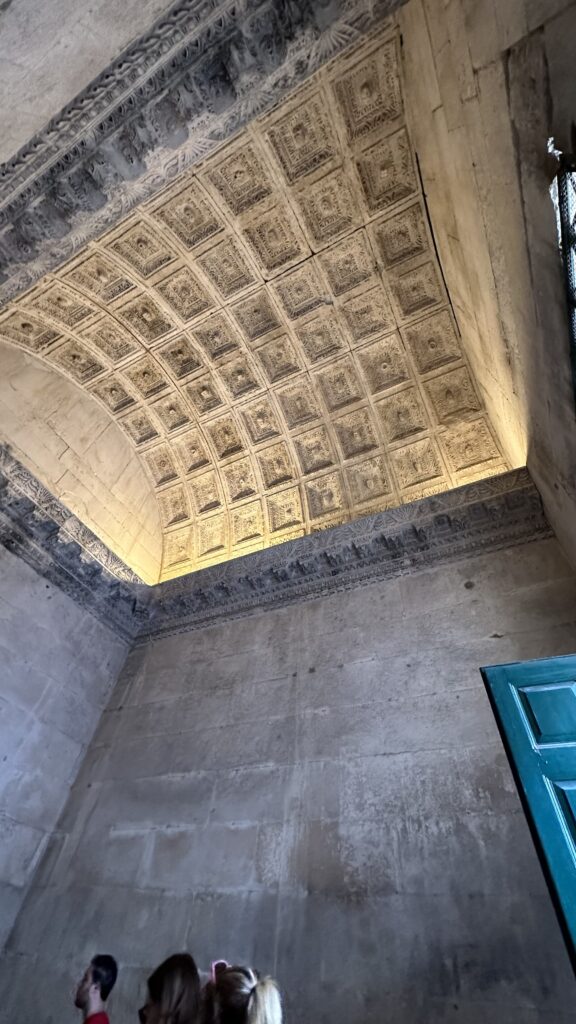
Cathedral of St. Domnius – The cathedral was originally Diocletian’s Mausoleum. The cathedral has changed little since 7th century when it was consecrated, apart from the addition of a 60-meter-tall bell tower built in stages from the 12th to the 16th centuries. The tower can in fact be climbed and is well worth tackling for its tremendous 360 panoramic views of Split. Part of the way, you’ll be on flimsy metal step suspended over a void. But the climb is well worth it.
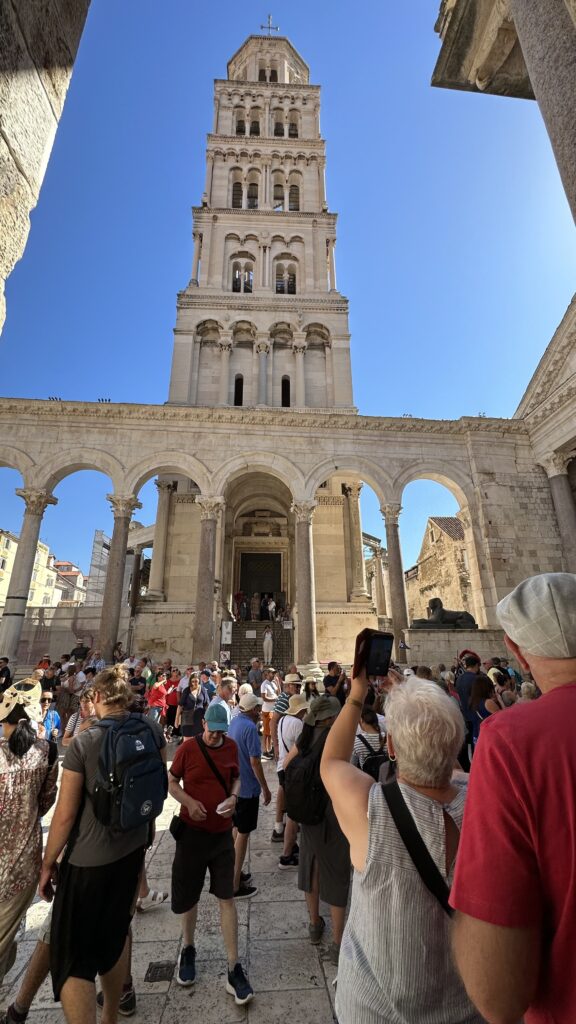


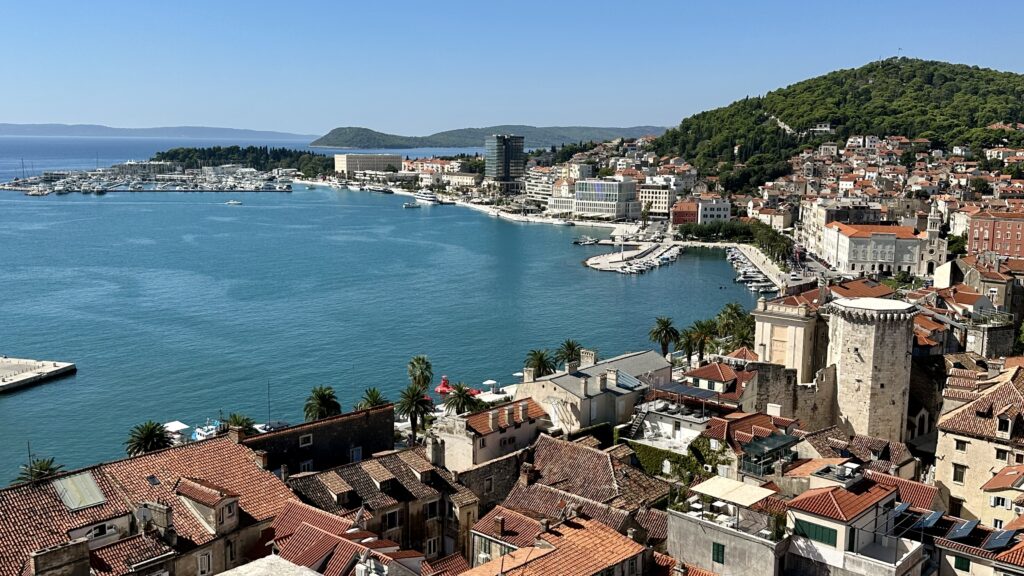
Palace Gates – The gates of the palace contain some of the most impressive ruins. There were once four gates, named after four metals: gold, silver, iron, and bronze. The Golden Gate (north side), was the monumental entrance that Diocletian first used in 305 A.D. It could only be accessed by him and his family. The Golden Gate is now the main gate of the palace. The Silver Gate is on the east side. In the 1950s, it was unearthed to its original level and restored to its original appearance. The Iron Gate (west side) has a tiny church with a beautiful Romanesque bell tower right above the door. The Bronze Gate (south side) is very small and simple. It led from the living quarters to the sea, providing an escape route if there was a mainland attack. This is the gate where most tourists start their guided tours.

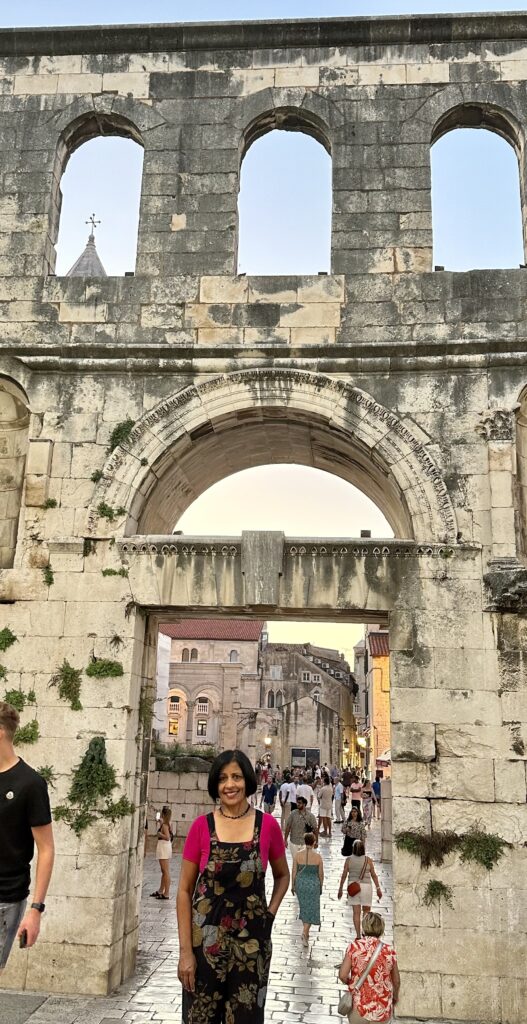


Split Riva Harbor – Split’s Riva Harbor is just spectacular. This long promenade is the thoroughfare between the glamorous marina and the western walls of the Old Town. There are a ton of restaurants and cafes to choose from and the view is stunning from everywhere.
